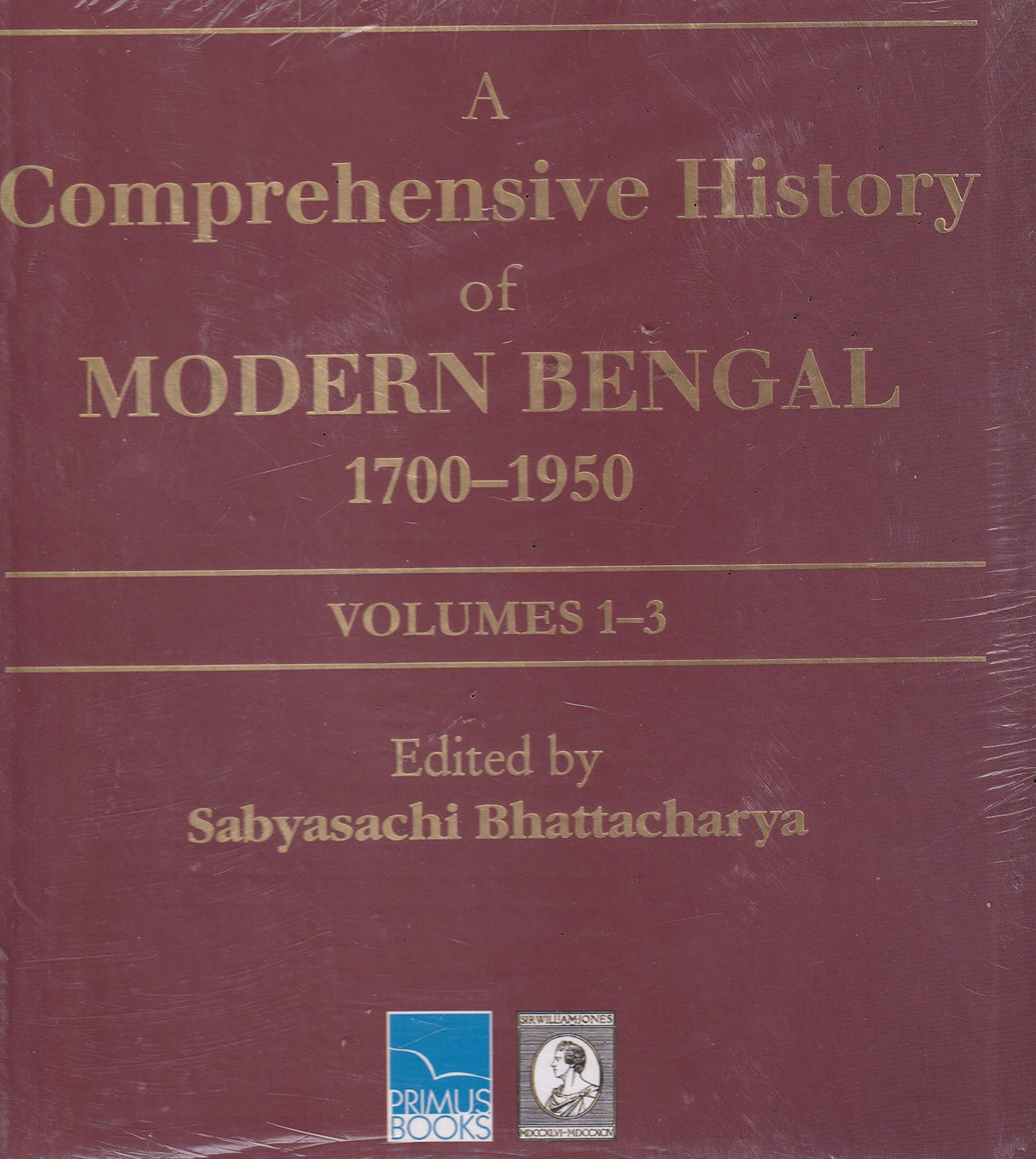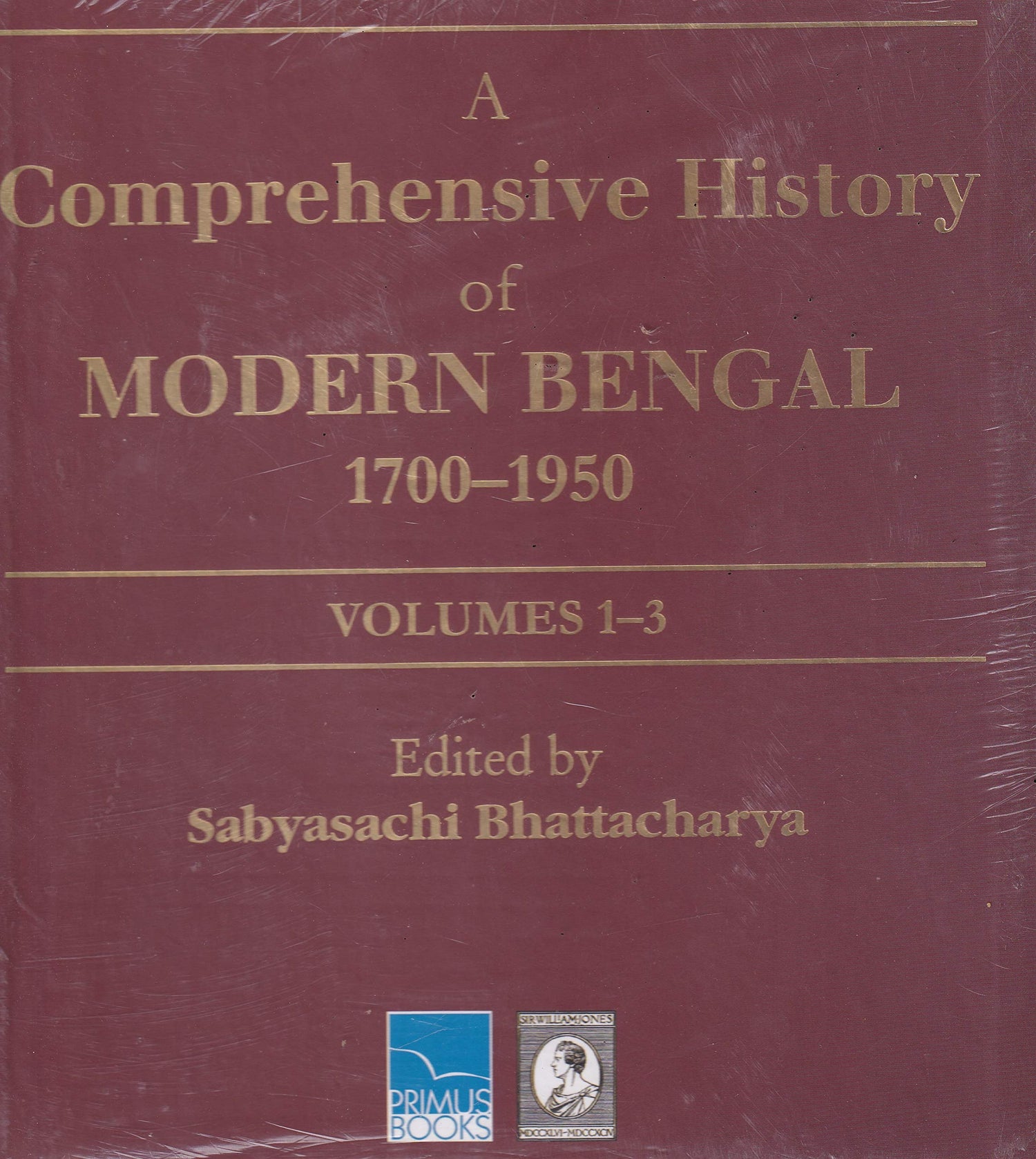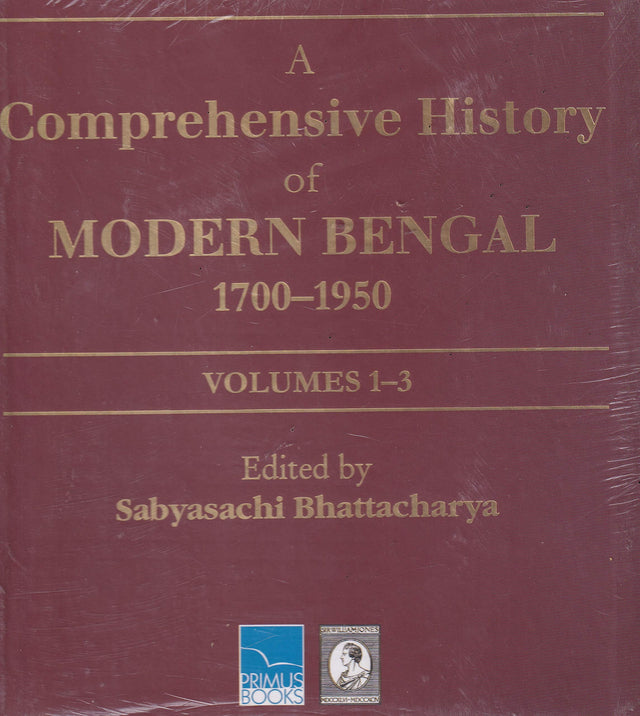A Comprehensive History of Modern Bengal, 1700–1950 (Volumes I–III)
A Comprehensive History of Modern Bengal, 1700–1950 (Volumes I–III) is backordered and will ship as soon as it is back in stock.
Couldn't load pickup availability
Genuine Products Guarantee
Genuine Products Guarantee
We guarantee 100% genuine products, and if proven otherwise, we will compensate you with 10 times the product's cost.
Delivery and Shipping
Delivery and Shipping
Products are generally ready for dispatch within 1 day and typically reach you in 3 to 5 days.
Author: Bhattacharya, edited by Sabyasachi
Brand: Primus Books
Edition: First Edition
Binding: hardcover
Number Of Pages: 3048
Release Date: 01-06-2020
Details: Product Description
The historical framework of a comprehensive history of modern Bengal, 1700–1950 deals with three thematically distinct periods—the decline and fall of the nawabs regime in Bengal and the ReMaking of the Polity of Bengal in volume I (1700–93); the reawakening of Bengal in volume II (1793–1905); and the freedom struggle against the British Raj in volume III (1905–50). however, these three volumes are structured such that they allow for overlappings in the periods covered, going back and forth in time: themes and narratives often move seamlessly from one volume to the other, retaining their coherence and inter-connectedness. Volume I of this series of three books begins with a close study of the events at the start of the eighteenth century, and covers ground up to the year 1793 when the permanent zamindari settlement in Bengal marked the closure to a contentious issue after much experimentation. The essays in this volume deal with a variety of themes like political history and warfare; activities of the various European companies; maritime economy; internal trade and markets; demography and Environment; growth of Calcutta; Zamindars; urbanisation and de-urbanization; Banking and credit; art and artists; social banditry; and Islam and the Muslim literati. Some of these essays attempt to cross the accepted patterns of periodization and the themes they deal with are relooked at in the volumes that follow. Volume II of this three-volume series begins with the Bengal Renaissance, with essays on Rammohun Roy, the derozians, the Tagore's, Vidyasagar, and religious thought and social reform in nineteenth-century Bengal. The volume is rich in the depiction of the social and cultural history of Bengal, with essays on Calcutta as a commercial metropolis; the middle-class intelligentsia; castes in Bengal; popular culture; Bengali language and literature; and the growth of journalism and public opinion, besides chapters on industrial economy, peasant economy, and Banking and credit. The idea of legal modernity; the Sundarbans; medicine and public health; The ramifications of the 1857 revolt in Bengal; and Bengali Muslims and their literature have also been touched upon. The issues raised in the essay on gender in this volume continue to be further discussed in the next volume. The third and last volume in this series begins with the Partition of Bengal in 1905 and the main br>Theme dealt with is the anti-imperialist struggle, with a focus on nationalist and communalist politics between 1905 and 1947. The Swadeshi era; Civil society and politics in Bengal and its nationalist trajectory; the Muslim League; and Bengali communal challenge during 1940–7 are some of the other issues discussed. It delves into social questions, The adivasi quest for a new culture; caste and politics in Bengal; the rise of a middle-class intelligentsia; the evolution of a Muslim literati; and the story of the hindi-speaking people in Calcutta. Three essays explore the position of women in Bengal, touching on their marginalization. Related themes, within the broad structure of the volumes, which deal with the industrial labour movement; Science in modern Bengal; Bengali literature and its links with nationalism and communism; the Calcutta police; Bengali theatre songs; and late colonial art are also discussed.
About the Author
Sabyasachi Bhattacharya was Professor of Indian Economic History at Jawaharlal Nehru University, New Delhi, and the Vice Chancellor of Visva-Bharati University, Santiniketan. He was also Chairman, Indian Council of Historical Research, and Founder President, Association of Indian Labour Historians. In 2017 the Indian History Congress felicitated him with its highest honour for his contribution to the writing of the history of Bengal. Some of his notable publications are Archiving the British Raj, 1858–1947 (2019), The Colonial State: Theory and Practice (2016), The Defining Moments in Bengal 1920–1947 (2014)
EAN: 9789389901955
Package Dimensions: 9.8 x 8.8 x 6.5 inches
Languages: English





